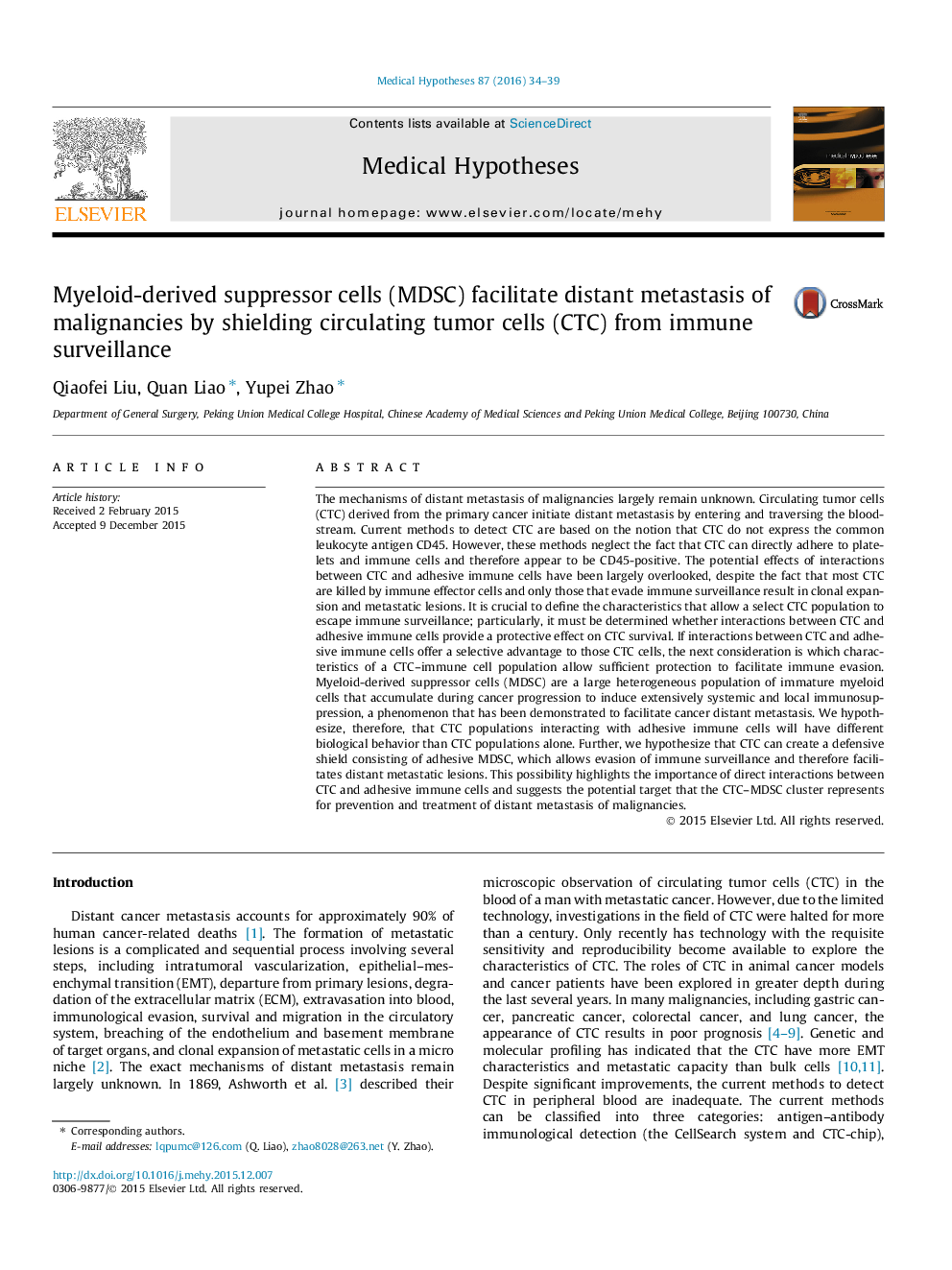| کد مقاله | کد نشریه | سال انتشار | مقاله انگلیسی | نسخه تمام متن |
|---|---|---|---|---|
| 5810732 | 1556558 | 2016 | 6 صفحه PDF | دانلود رایگان |

The mechanisms of distant metastasis of malignancies largely remain unknown. Circulating tumor cells (CTC) derived from the primary cancer initiate distant metastasis by entering and traversing the bloodstream. Current methods to detect CTC are based on the notion that CTC do not express the common leukocyte antigen CD45. However, these methods neglect the fact that CTC can directly adhere to platelets and immune cells and therefore appear to be CD45-positive. The potential effects of interactions between CTC and adhesive immune cells have been largely overlooked, despite the fact that most CTC are killed by immune effector cells and only those that evade immune surveillance result in clonal expansion and metastatic lesions. It is crucial to define the characteristics that allow a select CTC population to escape immune surveillance; particularly, it must be determined whether interactions between CTC and adhesive immune cells provide a protective effect on CTC survival. If interactions between CTC and adhesive immune cells offer a selective advantage to those CTC cells, the next consideration is which characteristics of a CTC-immune cell population allow sufficient protection to facilitate immune evasion. Myeloid-derived suppressor cells (MDSC) are a large heterogeneous population of immature myeloid cells that accumulate during cancer progression to induce extensively systemic and local immunosuppression, a phenomenon that has been demonstrated to facilitate cancer distant metastasis. We hypothesize, therefore, that CTC populations interacting with adhesive immune cells will have different biological behavior than CTC populations alone. Further, we hypothesize that CTC can create a defensive shield consisting of adhesive MDSC, which allows evasion of immune surveillance and therefore facilitates distant metastatic lesions. This possibility highlights the importance of direct interactions between CTC and adhesive immune cells and suggests the potential target that the CTC-MDSC cluster represents for prevention and treatment of distant metastasis of malignancies.
Journal: Medical Hypotheses - Volume 87, February 2016, Pages 34-39